SRAM Force eTap AXS WIDE – Wider and lower gearing choices for adventuring and touring – and racing, IMHO. SRAM realized there was a serious hole in their drivetrain lineup, particularly with their offerings for 2x drivetrains.
SRAM has listened to the pundits, and extensive improvements and changes have been made. SRAM claim Force eTap AXS Wide will “never run out of gears and always find a comfortable cadence.” More than that, the drivetrain now accommodates wider tyres (700c x 45mm and 27.5″/650b x 2.1″), thanks to changes in the crank spacing / chainline and front derailleur, especially with the battery placement. Let’s not mess about, onto the changes!
Video
Force 43/30T Wide Crankset
Featuring 43/30 chainrings and a wider Q-factor of 2.5mm each side, making for 5mm total, which is all due to the crankset’s wider spindle. Because of this change, the chainline of the crankset was adjusted by 2.5mm. These changes ultimately provide better tyre clearance.
“X-Range gearing technology gives you more range and a smoother gear progression, so you’re always in the right gear” – SRAM
Above and below, closeup detail of the chainrings from the front and the rear side.
It’s easy to see the extensive machine work for shifting ramps and pins. Incidentally, the chainring spider uses a 94mm bolt circle diameter. This crankset can handle 68mm or 73mm bottom bracket shells, the latter will require spacers.
If you’re concerned about the increased Q-factor, there is a component manufacturer who offers a shorter axle version of their pedals (52mm) that are SPD compatible, which brings your feet inward by 3mm each side.
Also noteworthy is SRAM’s new gloss finish, which features across the entire Force range.
The video above demonstrates me weighing all of the parts live, but the crankset tips the scales at 698 grams. Available in 165mm to 177.5mm in 2.5mm increments.
Bottom Bracket
For the purposes of my future project build involving this groupset, I have selected an English thread BSA 68mm bottom bracket, but the crankset is compatible with just about every bottom bracket standard, provided they use a dub bottom bracket bearing.
BSA 68mm, PF86.5, BB30 68, BB30 73-A (Cannondale), PF30 68, BB386, PF30 79-A (BBRight), PF30 73-A (Cannondale), T47 85,5, BSA 73mm, BB30 73 and PF30 73 are compatible.
The bottom bracket supports 68mm or 73mm bottom bracket shells, the latter will require spacers. Weight is 77 grams with the 73mm spacers.
Force eTap AXS Wide Front Derailleur
Due to the wider spacing of the crankset, that means a revised derailleur, which also clears bigger tyres. This has been an issue with previous generations of the eTap front derailleur when the battery was installed.
As alluded to earlier, the eTap system will now clear tyres measuring 700c x 45mm and 650b x 2.1″. The derailleur features “SRAM Yaw trimless cage technology with an optimized cage profile for new chainring combinations”.
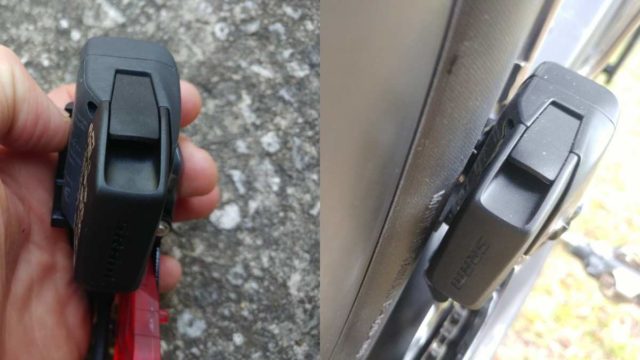
My project frame for this groupset is unavailable at the time of this article, but the photo above demonstrates the slimmer profile of the revised eTap Force AXS Wide front derailleur vs the Red eTap AXS front derailleur
Weight is approximately 170 grams.
Force 12-Speed XG-1270 Cassette, 10-36
The wider ratio 10 -36 Force level cassette features 10-11-12-13-15-17-19-21-24-28-32-36 cogs. It won’t be as light as a SRAM Red equivalent cassette, but it is a lot cheaper. When this cassette is paired to the 43/30 chainrings, you’re looking at a high gear ratio of 4.3, a low gear ratio of .83 and a range of 516%, all without the crazy annoyances of big cassette gaps like you have on a 1x – IMHO. Some people love 1x, some don’t, I fall into 2x preferred camp. With that said, this cassette opens up a new 1x option that is quite interesting, more information below!
SRAM XDR compatible only, weight is 303 grams.
Force eTap AXS Wide Rear Derailleur
Just like its shorter cage brother, the new variant features SRAM’s Orbit Fluid Damper, which functions just like a clutch, but relies on fluid friction vs mechanical parts. The derailleur cage is a little longer and designed to handle a 36 tooth cog.
I am expecting tinkers to see they can push the limits of the derailleur with bigger cogs in the future (one such manufacturer produces an 11-39 12-speed cassette).
SRAM’s newest derailleur will handle the other SRAM road AXS cassettes in the range, 10-28 and 10-33. Above, you can clearly see the derailleur is intended to max out at a 36 tooth cog. “The derailleur also capitalizes on large X-SYNC bearing-equipped pulleys for outstanding durability and efficiency” – SRAM
There are some interesting possibilities with this derailleur. Whilst I have a 2x crankset in my possession, you could run a 1x Force crankset fitted with a 36 tooth ring, and pair it to this rear derailleur and the new 10-36 cassette. This will guarantee a nice tight gear range and a low gear of 1 to 1, which would be a killer setup for cyclocross, or a 1x gravel bike where you don’t have super low gearing requirements. I’ve found the 1 to 1 gear ratio is good enough for climbs maxing out at 10 to 12 percent. Beyond that, you’ll be struggling unless you’re very strong.
Weight is 326 grams with the battery fitted.
Force eTap AXS Wide Gear Ratios
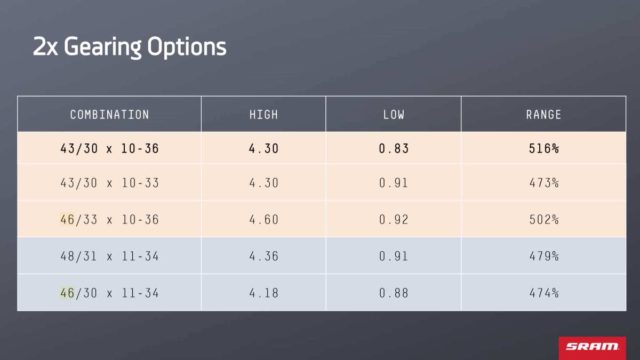
Chain
No changes, weight is 275 grams uncut including the master link.
Paceline & CLX-R Brake Rotors
The newest version of SRAM’s Paceline road rotor, which works just fine on gravel, features a new brake track. The new design is intended for smooth and quiet braking performance. The sample pair is 160mm and Centerlock compatible. 140mm is available as are 6-bolt.
Weight is 315 grams for the pair.
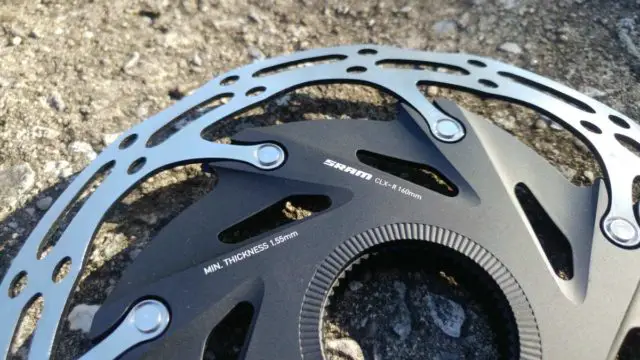
SRAM kindly sent along a pair of CLX-R brake rotors, which are the lightest of SRAM’s offerings at 216 grams for the pair. IMHO, a very sharp looking pair of brake rotors.
Weight on these beauties is 216 grams per pair.
Force eTap AXS Shifters / Brake Levers
These items remain unchanged, aside from a new Gloss finish, which I alluded to earlier. Left shifter, that I’ll be configuring European style, where the left side actuates the front disc brake.
Weight is 407 grams with shifter, caliper and hydraulic brake hose.
Right shifter, that I’ll be configuring European style, where the right side actuates the front disc brake. Motorcycle style where the brake setup is reversed, is quite popular in Australia.
Weight is 420 grams with shifter, caliper and hydraulic brake hose.
It blows my mind how small these items have become. When I first sighted photos of early prototype designs of hydraulic drop bar levers, they were big and bulbous. Nowadays, you’ve got a hydraulic reservoir and electronics for wireless shifting tucked away inside.
If you missed it, each of the shifters requires a CR2032 battery, that lasts an incredibly long time. I am still using the same shifter batteries on my original 11-speed eTap system, that I purchased over three years ago!
Pricing
- Cassette XG-1270 D1 12 Speed 10-36 – $US 185, €190, £170
- Rear Derailleur Force eTap AXS D1 12-Speed Medium Cage (Battery Not Included) – $US 490, €465, £415
- Front Derailleur Force Wide eTap AXS D1 Braze-on (Battery Not Included) – $US 350, €325, £290
- Crankset Force Wide D1 DUB 43-30 (BB not included) – $US 420, €435, £390
- Rotor Paceline 6-Bolt, 140mm & 160mm (includes Steel rotor bolts) Rounded – $US 40, €45, £40
- Rotor Paceline CenterLock, 140mm & 160mm Rounded (does not include lockring) – $US 50, €55, £50
Combined Weights
All up, the components required to build a functional Force eTap AXS wide groupset, assuming a 172.5mm crankset and CLX-R Rotors, is approximately 2,892 grams.
Project Bike / Long-Term Review
This wouldn’t be Gravel Cyclist without an interesting build project to accompany SRAM’s sweet new groupset. Watch this space for details of the frame and more!
Links of Interest:
Don’t forget to Like the Gravel Cyclist Facebook page, follow G.C. on Instagram and subscribe to our Youtube Channel. We are also on Twitter!


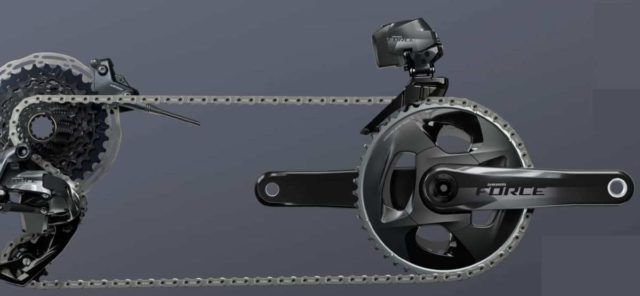
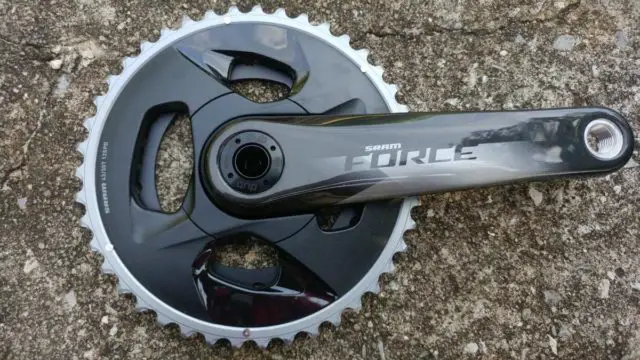
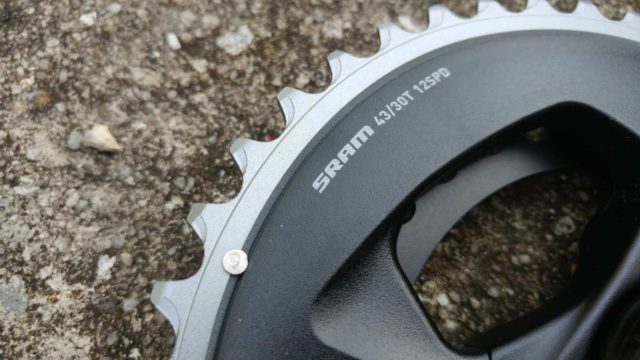
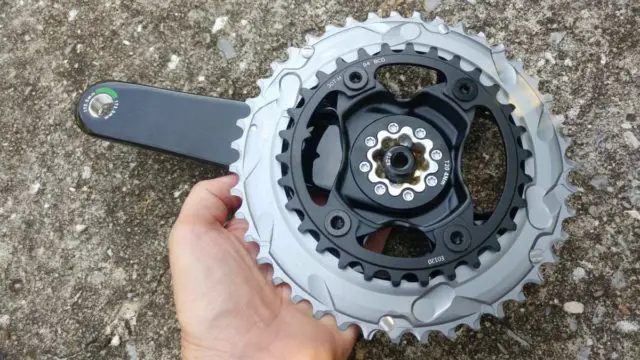
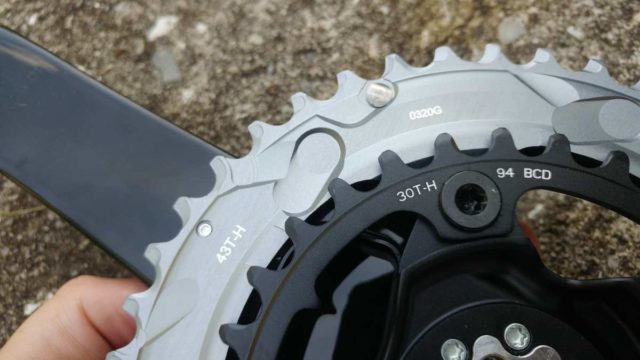
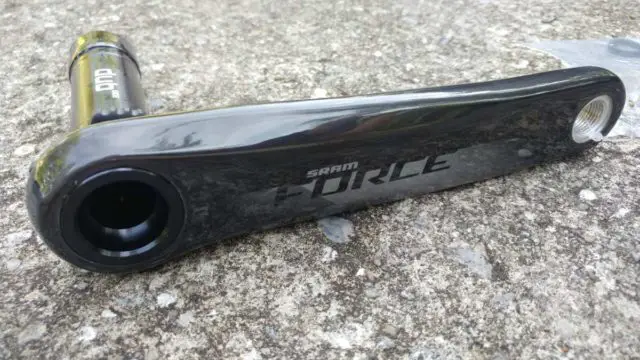
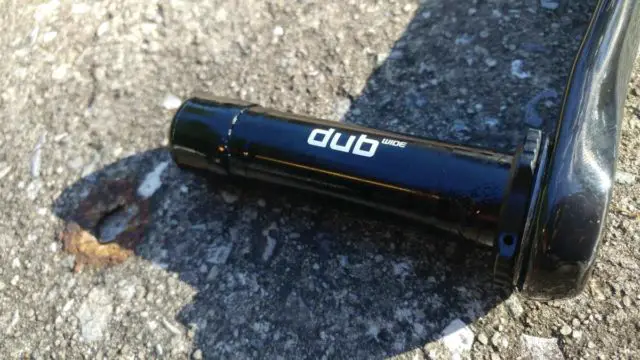
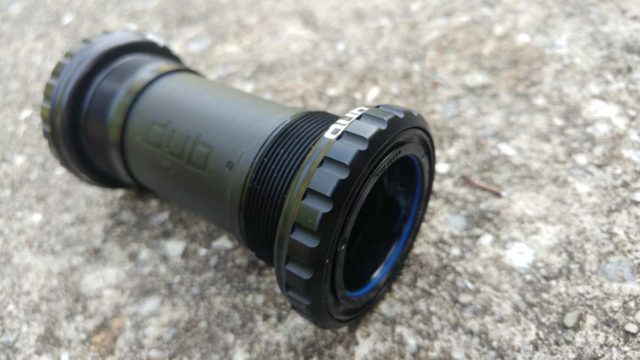
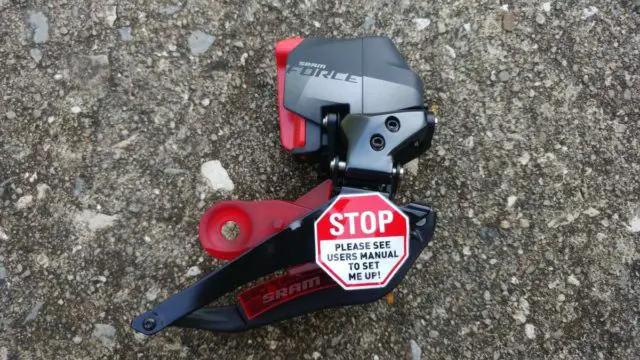
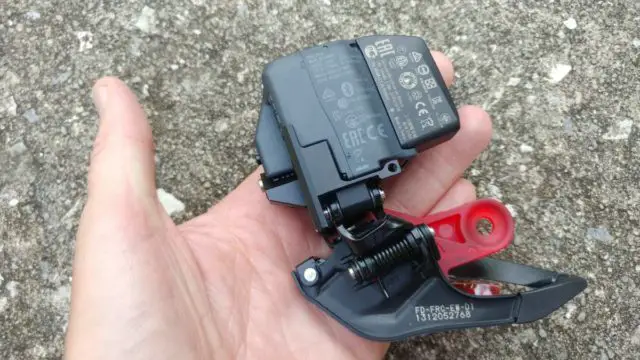
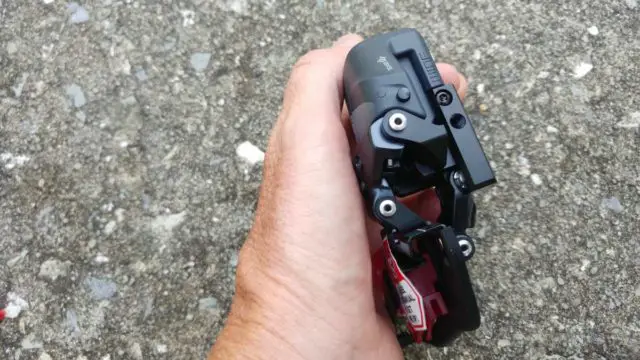
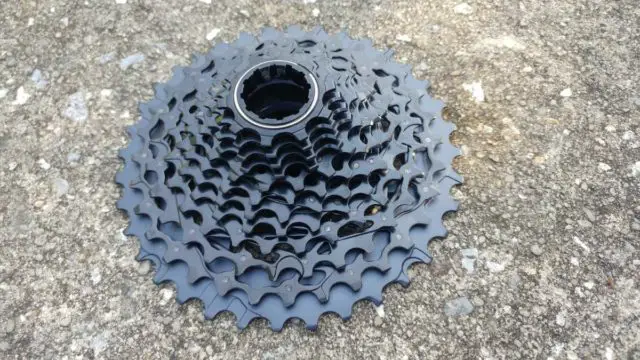
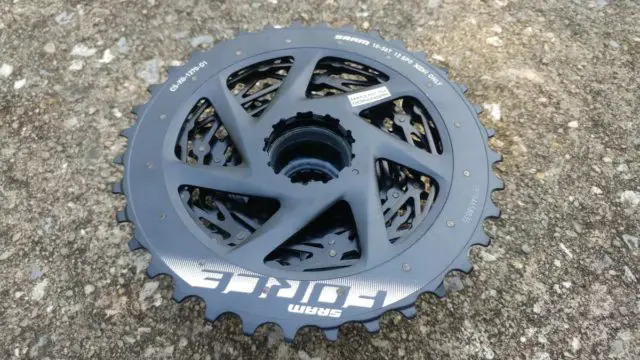
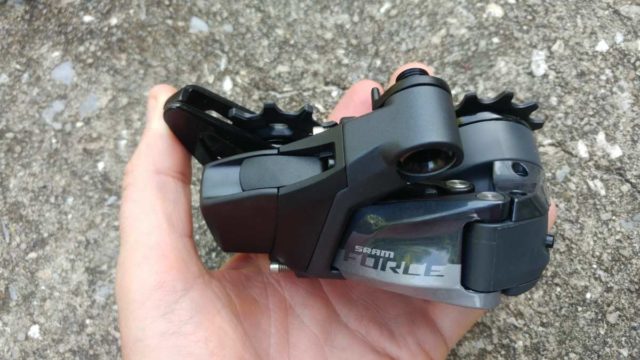
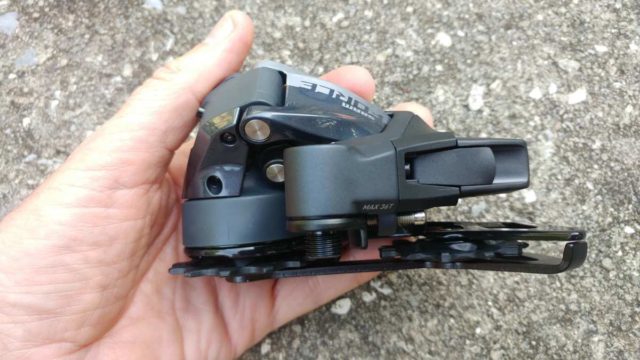
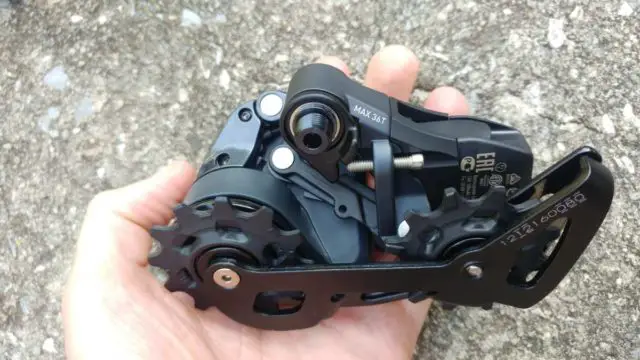
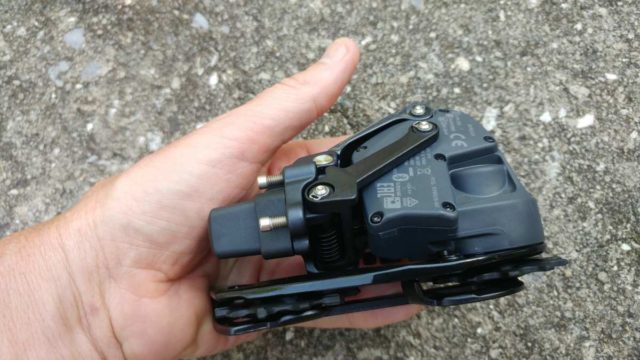
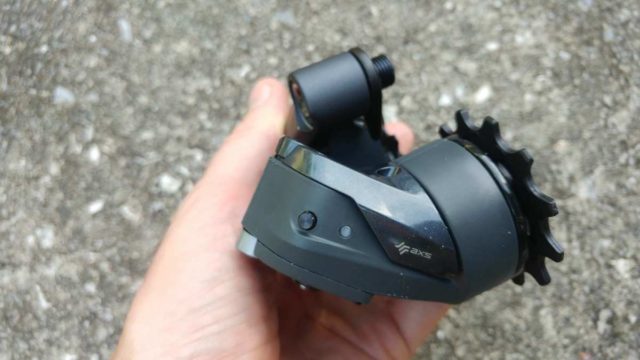
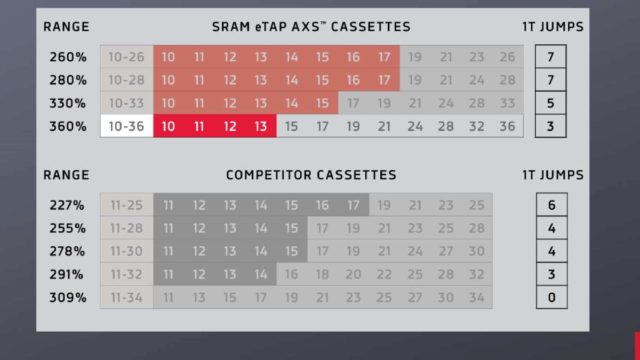
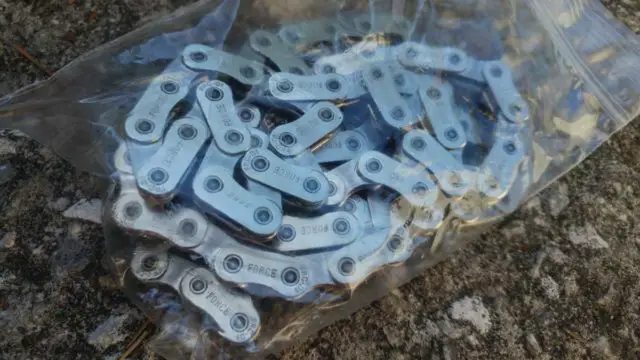
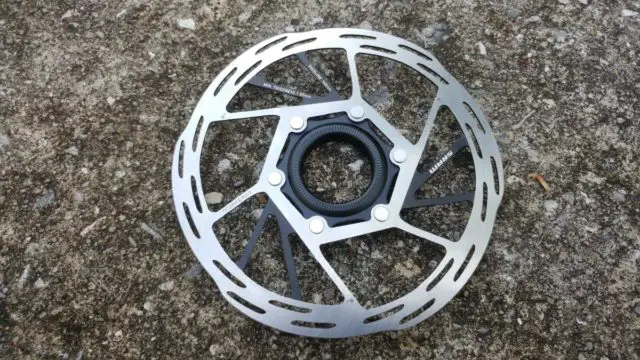
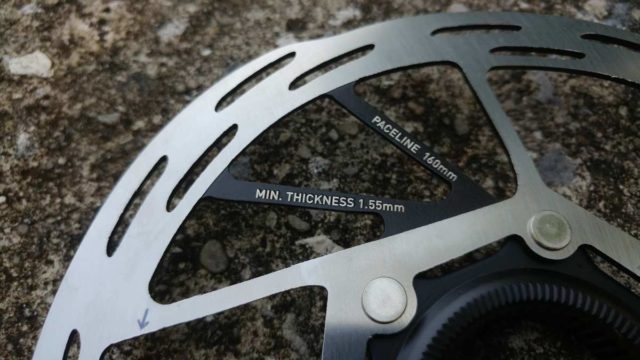
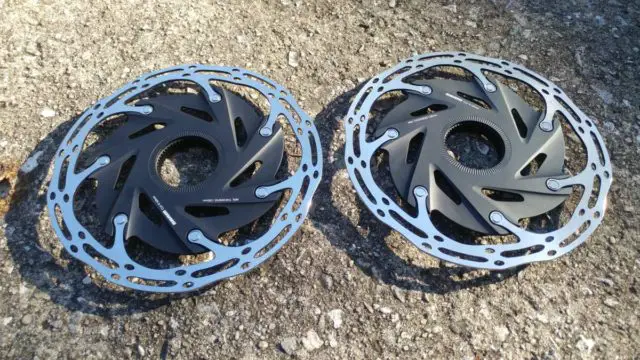
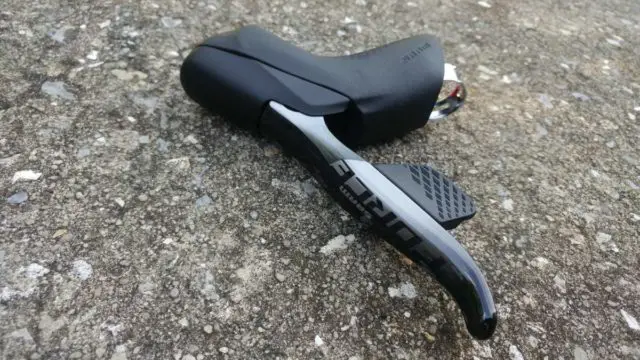
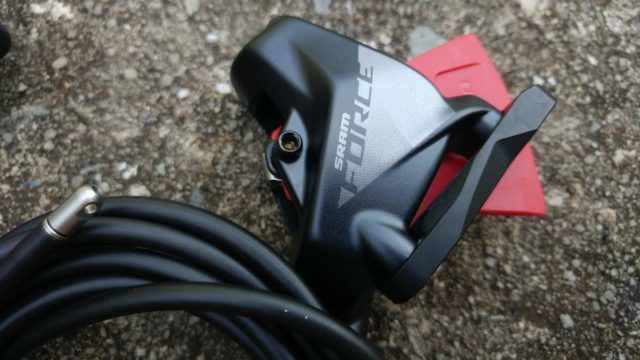
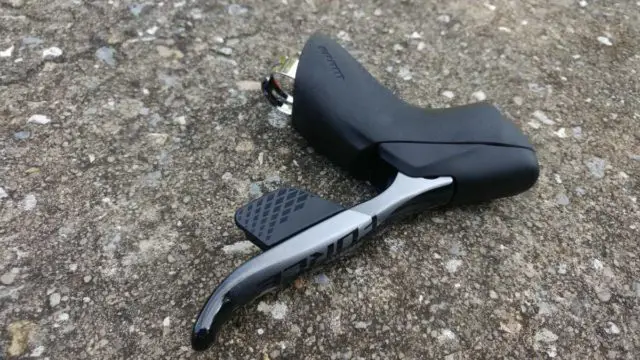
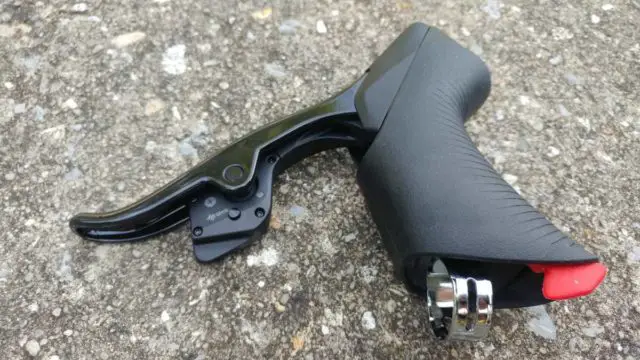
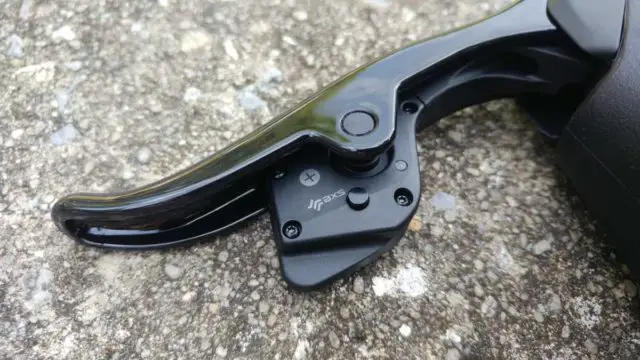
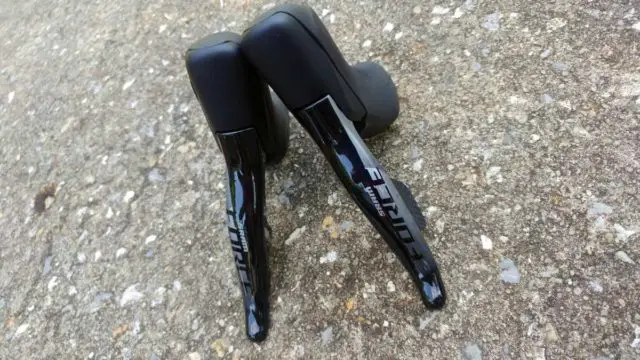
Nice report, thanks JOM! Perhaps the most useful thing here is that the cranks will fit a 73mm BB shell. (I wonder if they’re compatible with BB92 though?)
JOM said: “This crankset can handle 68mm or 73mm bottom bracket shells, the latter will require spacers.” In fact, it’s the narrower 68mm shell that will need the spacers, but at least we have options. Speaking of which, IMHO 43×30 still isn’t low enough for touring or bikepacking, but I guess it should be enough for gravel racing. Since the spider bolts on it wouldn’t be impossible to make one that would take even smaller rings, like say 37×24. It sounds as if the chainline change is due solely to the longer BB spindle, which implies putting the 43×30 spider and rings on regular Force AXS cranks should give a normal road chainline. This could be useful (IMHO) for road use with the 10-26 cassette.
The Rotor cassettes linked to might be compatible with the AXS shifting, but they fit on a HG 11 road freehub body, not XDR, so won’t easily interchange on the same wheels. FWIW, ZTTO also make a couple of interesting 12 speed cassettes, in 11-32 and 11-34 which presumably also fit on HG 11 freehub bodies, and of course Campag has 11-29/32/34, but on different bodies again. 🙁
Re the FD battery: Is it just 2.5mm further out due to the chainline change, or is the battery further offset to the outside of the FD body? (I can’t tell from the pics.)
I’m kinda amazed that neither SRAM nor Shimano has realised (or admitted) that the bikepacking/touring market could really use considerably lower gears than roadies do(!). There are plenty of people busily adapting MTB cassettes and subcompact cranks to otherwise road drivetrains. If you look at what people are doing (i.e., with 1x), lots are prepared to sacrifice higher gears to get low ones, and 43×10 is still a huge gear IMO. It’s about the same as 47×11, which I used IIRC once in Europe in 2015, but ask me how often I used the low gear I had, especially in the UK.
There is a smidge more room with the FD battery, etc. I’m not a huge fan of the 11 cog, I may use it descending once a year, would rather a 12 to 36 for what I get up to, 12-speed. We have played around with the 11-42 XTR cassette / XTR Di2 derailleur and 46 / 30, you can get some nice low options there with tinkering.
Hey JOM, thanks for the breakdown. Question and a comment – can the 10-36 cassette be used with an Eagle AXS rear derailleur? I have a “mullet” setup and don’t need so much range.
My related comment is that I still can’t believe they haven’t made a 12-speed 10-42 cassette. To me, that would be the perfect intersection of range and gear steps for a 1x. I don’t really want to hack it with Rotor cassettes, so I guess I’ll keep waiting, I can’t be the only one who wants this.
You are welcome. To answer your question, I would expect yes (B-screw tweaking may be needed, assuming there is one)), but unfortunately, I don’t have one handy to test. Ironically, I returned the Chamois Hagar a few weeks ago that had the Eagle AXS derailleur, would have been handy to have tested it… I’ll certainly confirm if the opportunity arises.
Yeah, for GRX 12 cogs would make sense, especially for 1x: more range and/or smaller gaps. With Di2, they could offer a firmware upgrade for the current 11 speed XT/XTR Di2 derailleurs and the 10-45 MTB cassette should work. I suspect though that they and SRAM would prefer to Force people to buy more derailleurs to AXS all the cassettes. SRAM now have three AXS RDs to cover the range, not exactly a cheap proposition. A 10-42 AXS cassette couldn’t hurt, as Lindy said.
Thanks JOM. I agree – 12T is plenty. Whenever Shimano get around to announcing Dura-Ace 9200 and 12 speeds (maybe soon?) I’m hoping they’ll stick with the current HG freehub bodies and 11 or 12T small cogs, not shove MicroSpline and 10T down our throats. I’m hoping for a 12-28 cassette, but won’t be holding my breath. We’ll see…
I really believe Shimano missed an opportunity to introduce GRX as a 12-speed groupset… have to post that review later. 12-28 12-speed would be a-f’n-mazing!
Wow. I really like those gear combinations. I tend to do a bit more road – so that 46/33 and 10-36 would work well for me.
I have the original ETAP and have now had several RD replacements under warranty due to grit getting between the bushings and pins on the parallelogram and the motor going into protection mode (no shift). It would be interesting to see if the Force RD has solved this issue.
Interesting to hear about your Gen 1 issues with eTap. I’ve abused the eff out of my Gen 1 derailleur, I just have gotten lucky. I rode Paris to Ancaster and Almanzo 100 in two of the sludgier editions, and more!
Figured as much. LBS has the same experience as yours.
I believe you meant to say the left shifter does the *rear* brake. I ride right/front as well, but no longer remember what made me choose that as I’ve always been in the USA.
I’m looking forward to seeing the build.
Thank you so much for the quality review!
In a previous video you showed how Shimano’s conservative recommendations didn’t accurately capture the true range of the GRX rear derailleur by slapping a 11-40 back there and making it work. I’m wondering if a similar thing is going on with this new WIDE iteration from SRAM and if I would be able to use the 10-36 cassette with the original short cage Force derailleur. I love to go up steep hills so this 10-36 would be rad.
Scout, if I had a short cage Force derailleur bike at my disposal, I would test the 10-36 cassette with it. If that changes, I will definitely post something about it.
Thanks!
As a functionally trivial point, the new crank and chainrings are much more attractive than the previous offering. I’ve thought the chainrings on the AXS cranks have been particularly bad looking but these are OK.